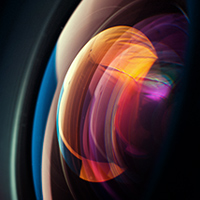Abstract
Heat generated in traditional exothermic solid-state amplifiers or lasers by Stokes shifted stimulated emission is a source of increased temperature inside the amplifier or lasing medium, which causes poor beam quality and limits the average output power. The very high surface-to-volume ratio and guiding in optical fiber amplifiers or lasers is an excellent solution to compete against other high-power laser technologies based on solid-state bulk lasers, such as, for example, thin-disk lasers. In spite of tremendous progress in the development of high-power fiber devices, the optical intensities in high-power fiber devices have increased enormously and have almost reached the damage threshold of the material. These amplifiers require a cooling system. Water cooling should be avoided for fibers with limited chemical stability such as fluoride fibers. In 1999, Steven Bowman suggested a radiation-balanced laser, where lasing is accomplished by offsetting the heat generated from stimulated emission by the anti-Stokes cooling effect [1]. But the radiation-balanced laser requires precision control of the pump power at each point along the length of the lasing medium. This is not a simple problem especially in the case of a fiber laser or amplifier. In 1995, Epstein's research team observed for the first time the net radiation cooling by anti-Stokes fluorescence in solid state materials [2].
© 2009 IEEE
PDF ArticleMore Like This
Galina Nemova and Raman Kashyap
CJ6_4 The European Conference on Lasers and Electro-Optics (CLEO/Europe) 2011
Galina Nemova and Raman Kashyap
CA_P_21 The European Conference on Lasers and Electro-Optics (CLEO/Europe) 2013
Raman Kashyap and Galina Nemova
OSD58 Workshop on Specialty Optical Fibers and their Applications (WSOF) 2008

